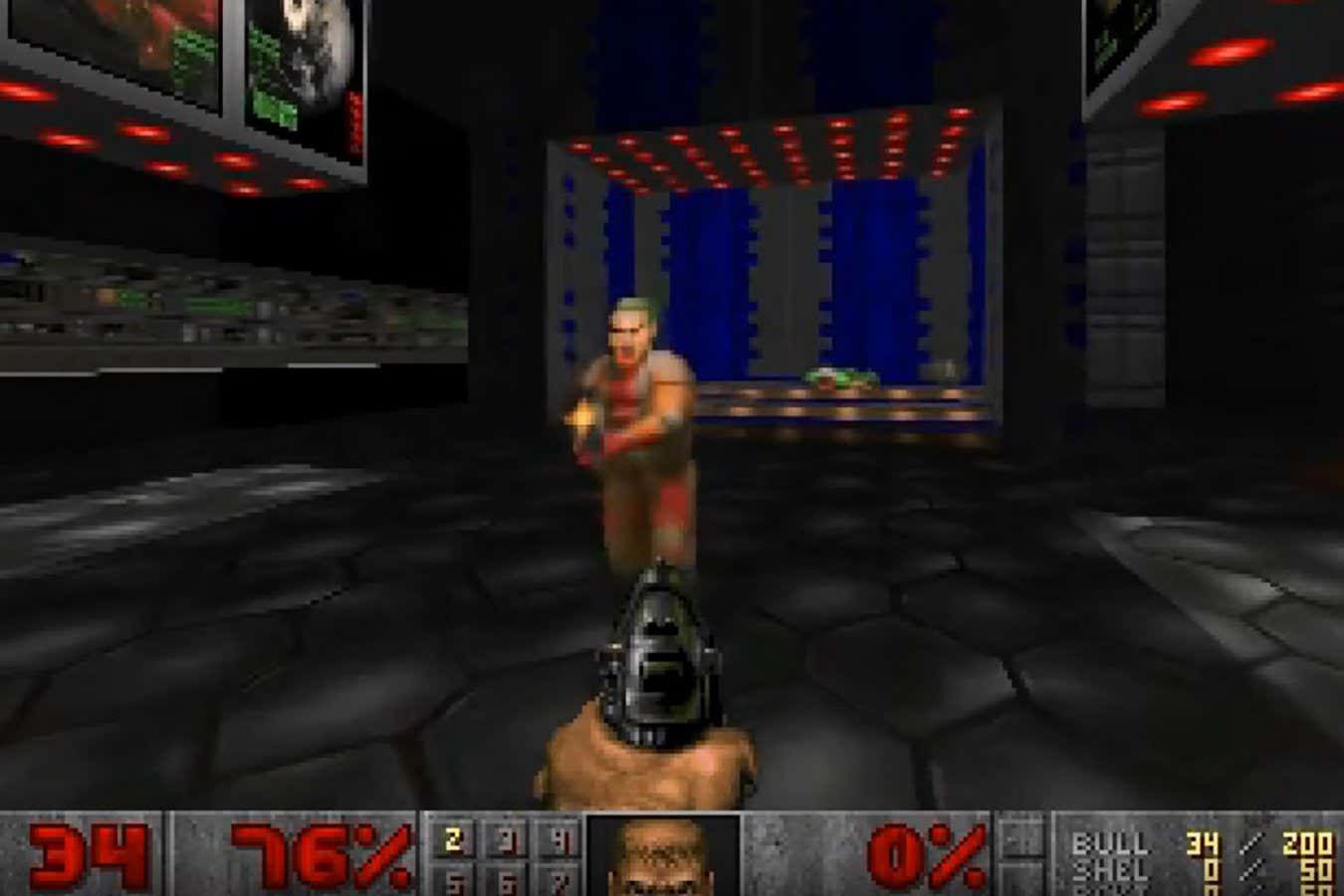The model, called GameNGen, was made by Dani Valevski at Google Research and his colleagues, who declined to speak to New Scientist. According to their paper on the research, the AI can be played for up to 20 seconds while retaining all the features of the original, such as scores, ammunition levels and map layouts. Players can attack enemies, open doors and interact with the environment as usual.
After this period, the model begins to run out of memory and the illusion falls apart.



Half the backlash against AI stems from its hype-men pursuing the dumbest possible demonstrations.
This tech allows games that are a photorealistic dream sequence. Or a cartoon animated in real-time. Or flow-state Selfish Game experiences that are incomprehensible to anyone else watching.
So what do they show off? A game that runs on a potato, and looks like it. A thirty-year-old FPS with palette banding and billboard enemies. The worst possible way to play Doom, and here I am counting the Super Nintendo “port.” This game might one day run on Game Boy Color.
Networks like this could also run on Game Boy Color. Not with the same kind of “long” memory, a whole 20 seconds of temporal consistency, wow, but like - neural networks are just matrix math. It’s the training that takes obscene quantities of hardware and power. Small networks can still be eerily capable, with all that effort put into their construction. This could be toy hardware showing off gloopy approximations of Crysis or Elden Ring or whatever.
What they should’ve done is train on videos of Doom Eternal and run the network on a 486.